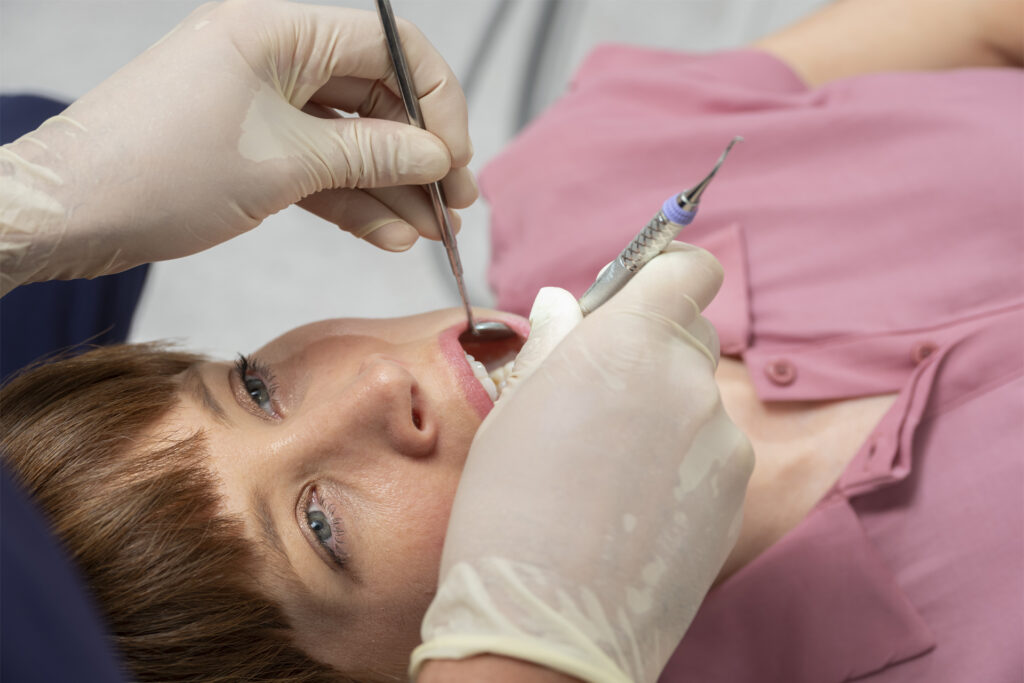A dental implant is either a titanium or zirconia fixture that integrates into your jaw bone that can have a prosthetic tooth or bridge screwed onto.
The placement of a dental implant is a minor surgical procedure carried out under local anaesthetic and some times with intravenous sedation.
The procedure involves making an incision into the gum tissue and reflecting this away to access the underlying bone.
The jaw is then prepared to receive the implant with a series of precise surgical drills. This is called preparing the osteotomy.
Once the osteotomy is prepared an x-ray is usually taken to ensure positioning before the implant is placed.
During the implant placement some patients report feeling slight pressure as the threads of the implant begin to engage with the bone. This is very normal and only lasts a few seconds until the implant is fully seated. The whole procedure will be painless because of the local anaesthetic and if you are sedated you will most likely be fast asleep and wake up with no memory of the procedure.

Once seated either a cover screw or healing abutment will be screwed into the dental implant. This protects the internal part of the implant until the time comes to place the prosthetic crown.
The final stage is to close the reflected gum tissue either over the cover screw or around the healing abutment. This is done with small, neat stitches of non resorbable plastic sutures. Plastic sutures are used because plaque and bacteria doesn’t adhere to them as easily and therefore they are much more hygienic around a surgical site.
It is important to try to keep the surgical site as clean as possible after the procedure. Gentle brushing with a soft bristled toothbrush and use of non alcohol based mouthwash is recommended.
As tempting as it might be, please refrain from playing with any sutures or a healing abutment with your tongue, allow the site to heal.
Some post operative discomfort for a few days is normal, don’t worry. Swelling, bleeding and bruising are all signs that your body is healing after the surgery and all only temporary. This is best managed with a combination of ibuprofen and paracetamol if you can tolerate both.
A short course of antibiotics is recommended to lower your risk of post operative infection. The most common cause of implant failure is infection around the implant and failure to integrate. Please complete this course of treatment.
A post operative review around a week after the procedure is recommended and a subsequent suture removal appointment around the 2 to 3 week mark is needed. Once the sutures have been removed the implant is allowed to integrate with the bone for approximately 3 months until the restorative phase can be completed.


Recent Comments